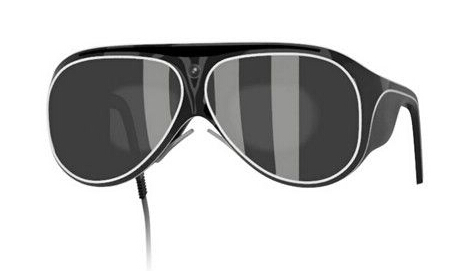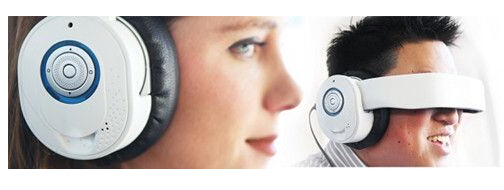Google Glass is perhaps the most dazzling product in the field of smart glasses, but it is clearly not the only concern in the field. In addition to Google Glass, we have seen a lot of very good smart glasses devices, some of which even have features that Google Glass can't. The technology website has recently counted three of the best products: 1. Phototherapy glasses Seasonal affective disorder (SAD), or “winter hesitationâ€, affects up to 10 million Northern Hemisphere residents every winter, with symptoms including depression, anxiety and mood changes. Light therapy is the main form of treatment for SAD by using special lights to simulate sunlight that is not naturally absorbed. To treat SAD, a student at the School of Media Arts and Design at Drexel University in the United States designed a special pair of glasses that emit simulated sunlight to the wearer's afterglow. The authors claim that all SAD patients will be “deceived†and that it is summer now – even in the deep forests of northern Norway in the midst of February in Wisconsin. The maker of this pair of phototherapy glasses is called Tory Hudson, who is only 22 years old this year. His original intention in designing this device was to make light therapy more popular, as most phototherapy lamps were very cumbersome and patients had to wait a few hours for treatment. With this pair of glasses, patients can receive treatment anytime, anywhere. 2.Meta Meta, a startup from California, has integrated the power of augmented reality, notebooks and smartphones into a pair of Ray-Ban sunglasses, and with this device, holographic images will appear in front of your eyes. Meta's system is divided into two parts, a 3D output display and a 3D scanner. The former will let the wearer see the hologram, and the scanner will scan the surrounding environment and tell the computer where to place the image. According to the author, the overall concept of the device is to develop a Google glasses device with more different appearances. Meta raised $200,000 from Kickstarter last year, and they have already opened pre-sales for the product. The price is much higher than Google Glass, which is $3,650 and will be shipped in January next year. 3.Avegant Glyph Glyph is a wearable "personal theater" that uses a virtual retina display technology that delivers crystal-clear images to the wearer. When you put Glyph in front of your eyes, the screen display is not the display, but a 2 million micro mirrors project the visual content directly onto your retina. With a normal HDMI connection, users can put any image in front of their eyes. 100W Portable Solar Panels,Mini Solar Panel,Watt Solar Panel,Portable Folding Solar Panel Guangzhou Fengjiu New Energy Technology Co.,Ltd , https://www.flashfishbatteries.com
